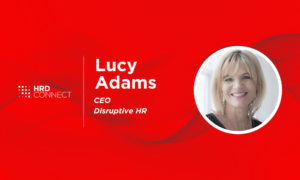What does 'career transition' mean today?
- 4 Min Read
Is ‘career transition’ just another word for outplacement, or does it have another meaning in the modern workplace? Kate Keaney, CEO, Connor HR, investigates.
- Author: Kate Keaney
- Date published: Oct 2, 2019
- Categories

By Kate Keaney, CEO, Connor HR.
What does “career transition” mean to you? For many, it’s manager speak for leaving your job – like “moving on” or “being let go” — in other words, a synonym for “redundancy”. But career transition encompasses a range of scenarios, of which redundancy is just one.
Let’s take a step back for a moment and consider what the word “transition” means: the process or a period of changing from one state or condition to another. That could apply to a multitude of career scenarios:
- Seeking promotion or a role change
- Moving to part-time hours or taking retirement
- Evaluating what’s next for you and your career
- Maternity/paternity career breaks
- Travelling/gap years/sabbaticals
- Caring for a relative
Each one of these scenarios poses a risk to an organisation — the risk of losing a valued employee. So how can you prepare for and mitigate that risk while still supporting your people?
Support for any kind of career change
The changing nature of the workplace means that many fewer people have or expect a job for life these days. An employee’s career journey is likely to change lanes and gears many times before they reach retirement.
Supporting employees through these moments of change gives you a chance to retain them, if you can, or to manage their departure from your organisation in a way that doesn’t disrupt business as usual. It also helps strengthen your employer brand and position you as an employer of choice, by showing you value and invest in your people.
One instance of this is women going on, and returning from, maternity leave. One of our large public-sector clients found that more than half of their female employees were leaving voluntarily within two years of maternity leave. By supporting these employees in an objective, constructive way, you can help them to make informed decisions about whether they come back to work or not – and then support them as they adjust back into the workplace if they do return.
Another great example is individuals who seem to have ‘stalled’ in your organisation. Perhaps they were making great progress, but this has now ground to a halt, or they are seeming to disengage from their work and your organisation. It’s likely that these people are needing to make a decision about their career – perhaps they aren’t happy in the role they’re in right now. An intervention designed to help that individual decide what’s missing from their role will help them determine the right path forward, whether that’s development to make them more effective or stretch them in their current role, a different role in your organisation, or a role in a different organisation. Whatever the decision, you’re able to either retain that person and keep them productive, or manage their transition with minimal disruption to the organisation and their colleagues.
Of course, retirement is a different story — you can’t keep someone while they retire from work. We are constantly being told that we need to work for longer if we want to maintain the standard of living we’ve come to expect in 2019; one result of which is that people are increasingly reluctant to start thinking about retirement. Given that the percentage of the UK population over 65 is estimated to exceed 20% within the next ten years according to the Office of National Statistics (ONS), this means that organisations everywhere are likely to find their talent pipelines under threat as positions at the top of the organisation don’t open up, or employees that would ideally like to move towards retirement don’t know how to have this conversation and become disruptive.
Supporting your valued employees with retirement transition services helps them to retire in an orderly (and timely) manner, with open communication back to the organisation. Then, your organisation can properly manage its talent pipeline, ensuring that senior positions become available for talented young individuals before they become bored and look elsewhere, as well as helping the employees who are moving on adjust to this new phase of life.
Nurture and retain your key people
When organisations view career transition as a synonym for people leaving, they miss out on so many opportunities to develop and grow their workforce in a controlled, orderly way, and keep talented individuals on board.
Rather than seeing the dynamic nature of the modern workplace as a threat, look on it as an opportunity instead — an opportunity to bring out the very best in your people.








